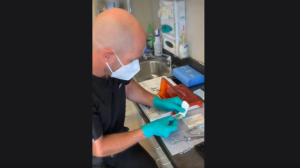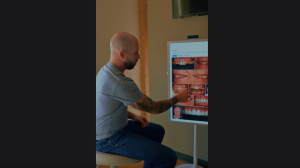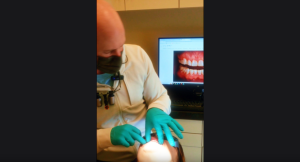Our teeth are constantly exposed to various forces and elements that can gradually wear them down. From the natural process of attrition to the damaging effects of clenching, grinding, acidic erosion, and even the wear and tear from older dental work, it’s essential to understand how these factors impact our oral health. Fortunately, with a comprehensive approach to dental care, many of these issues can be managed and treated to preserve the natural structure of our teeth for years to come.
The Challenges Teeth Face Over Time
Over the years, our teeth face constant stress. Some of the most common causes of wear and tear include:
- Attrition: The gradual wearing down of teeth due to friction, often from grinding or clenching.
- Grinding and Clenching: These habits can put immense pressure on teeth, leading to fractures and excessive wear.
- Acidic Erosion: Frequent consumption of acidic foods and beverages can erode tooth enamel, making teeth more vulnerable to damage.
- Cavities: Decay that gradually destroys tooth structure, compromising both the function and appearance of teeth.
- Old Dental Work: Over time, dental restorations like fillings, crowns, and bridges can weaken, leading to the breakdown of the tooth structure beneath.
These factors can leave your teeth fragile and unstable, making them more prone to further damage. But all hope is not lost—today’s dentistry offers advanced solutions to help restore and preserve your smile.
The Comprehensive Dental Care Approach
At Hopkins Dental Health, we take a comprehensive approach to address these challenges. When dealing with extremely fragile teeth, the goal is to create a treatment plan that not only restores function but also preserves as much of the natural tooth structure as possible. This involves:
- Minimal Tooth Preparation: We aim to remove as little of the original tooth structure as necessary, ensuring that the tooth remains as strong and stable as possible.
- Bonding Ideal Ceramics: Once the teeth are prepared, we bond high-quality ceramics to the outer surface of the teeth. These ceramics not only provide a strong protective layer but also enhance the appearance, giving you a natural, beautiful smile.
- Stabilizing the Bite: It’s essential to ensure that the bite is stable after treatment. A balanced bite prevents further damage and helps maintain the longevity of the restoration.
By combining these advanced techniques, we can address the underlying issues affecting your teeth while improving both function and aesthetics.
Why Preservation Is Key
The goal of comprehensive dental care is to preserve your tooth structure as much as possible. This is especially important because the longer we can keep your natural teeth intact, the better your overall oral health will be in the long run. Additionally, preserving tooth structure can help prevent further complications and the need for more invasive treatments down the road.






